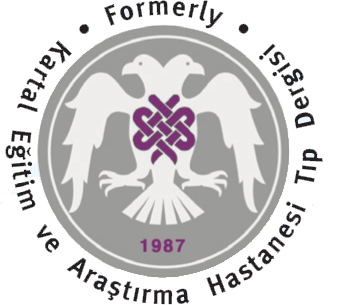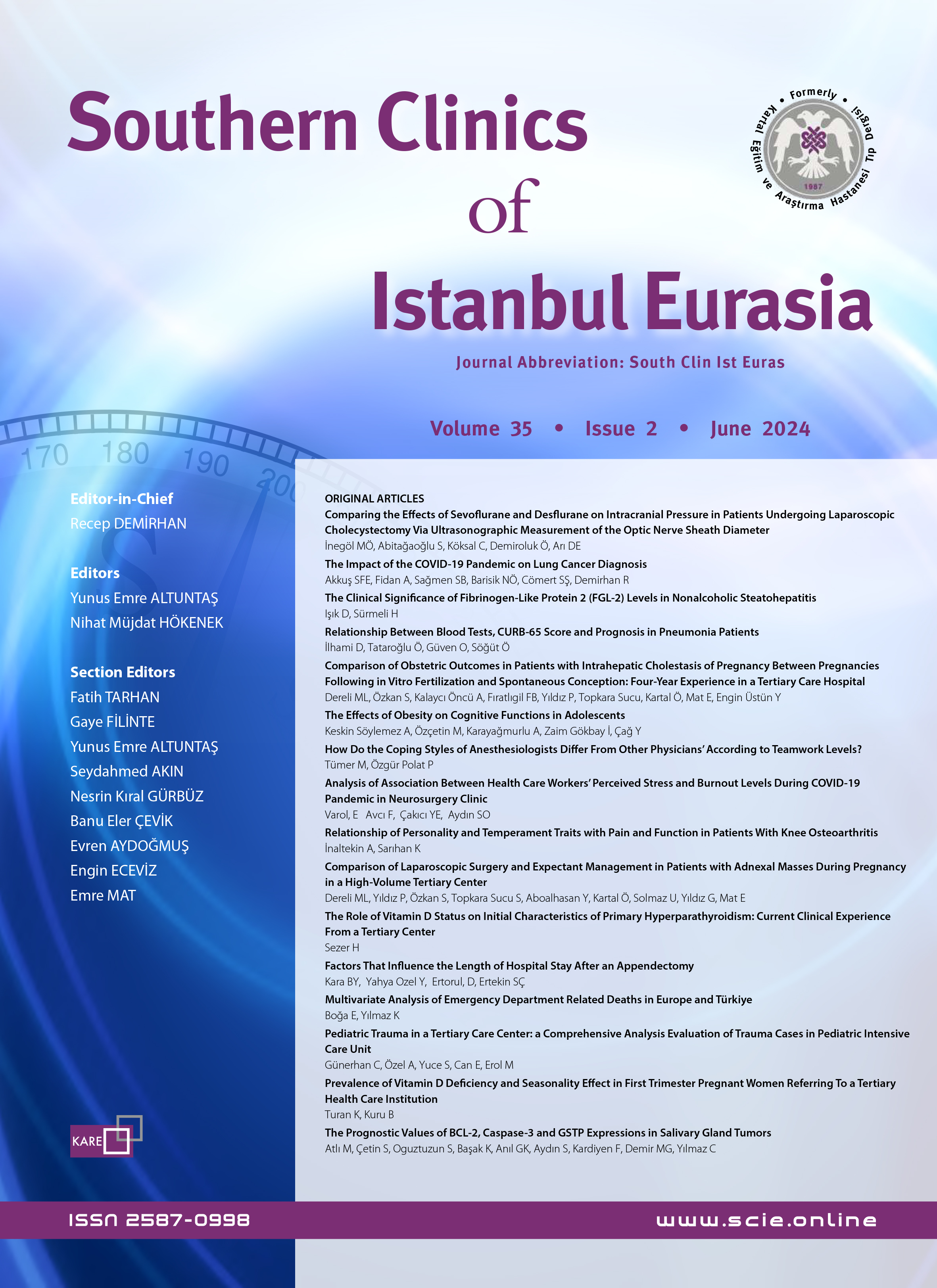Risk Factors for Postherpetic Neuralgia in Immunocompetent Patients
Yasemin Nadir1, Hüseyin Arslan21Department of Infectious Diseases and Clinical Microbiology, Sandıklı State Hospital, Afyonkarahisar, Türkiye2Department of Clinic of Physical Medicine and Rehabilitation, Sandıklı State Hospital, Afyonkarahisar, Türkiye
INTRODUCTION: The most common and important complication of herpes zoster (HZ) is postherpetic neuralgia (PHN). PHN generally affects the elderly and immunocompromised populations. Many studies investigated the risk factors for PHN; however, these studies were generally performed among immunocompromised patients. This study aimed to quantify risk factors for PHN in immunocompetent zoster patients.
METHODS: We retrospectively reviewed the records of 106 patients diagnosed with HZ and aged ≥18 years between January 2017 and May 2019. Eight participants with immunocompromised status or under immunosuppressive treatment were excluded. Our underlying definition of PHN was pain persisting for more than 90 days following the diagnosis of zoster. Patients were divided into the PHN group (n=18) and the non-PHN group (n=80) on the basis of occurrence of PHN. Variables that can affect the development of PHN were investigated by comparing these two groups.
RESULTS: In total, 98 eligible patients were included in this study. The mean age of the patients was 58.62±17.53 years. PHN was determined in 18.4% of the patients. PHN was mostly seen in the autumn. Patients in the PHN group were significantly older (mean age 68.72 years) than patients in the non-PHN group (56.35 years). PHN was higher in patients with chronic diseases. Patients with nonthoracic dermatome involvement were more likely to get PHN. There were no proportional differences detected between genders, and there were no differences between antiviral drug groups for PHN incidence.
DISCUSSION AND CONCLUSION: In this study, having chronic disease, increased age, and nonthoracic dermatome involvement were found to be risk factors for developing PHN among immunocompetent hosts. As a new finding, we found that PHN has a higher incidence in autumn.
İmmünkompetan Bireylerde Postherpetik Nevralji İçin Risk Faktörleri
Yasemin Nadir1, Hüseyin Arslan21Sandıklı Devlet Hastanesi, Enfeksiyon Hastalıkları ve Klinik Mikrobiyoloji2Sandıklı Devlet Hastanesi, Fizik Tedavi ve Rehabilitasyon
GİRİŞ ve AMAÇ: Postherpetik nevralji (PHN), Herpes zosterin (HZ) en önemli komplikasyonudur. Özellikle yaşlı ve immünsupresif bireylerde sıklıkla görüldüğü bilinmektedir. Bu nedenle immünsupresif HZli hastalar arasında PHN risk faktörlerini araştıran birçok çalışma yapılmıştır. Biz de çalışmamızda immünkompetan bireylerdeki PHN risk faktörlerini araştırmayı amaçladık.
YÖNTEM ve GEREÇLER: Bu çalışmada, Ocak 2017Mayıs 2019 tarihleri arasında başvuran 18 yaş üzeri ve klinik olarak akut HZ tanısı alan 106 hastanın kayıtlarını geriye dönük olarak taradık. İmmünsupresif hastalığı olan veya immünsupresif ilaç kullanan sekiz hasta çalışmaya dahil edilmedi. HZ tanısından sonra en az 90 gün devam eden ağrı PHN olarak değerlendirildi ve buna göre hastalar iki grupta incelendi; PHN (n=18) ve nonPHN grubu (n=80). PHN gelişimini etkileyebilecek değişkenler bu iki grup kıyaslanarak incelendi.
BULGULAR: Çalışmaya alınan 98 hastanın yaş ortalaması 58.62±17.53 yaş olarak saptandı. Bu hastaların %18.4ünde PHN gelişti. PHN gelişen hastaların sıklıkla hastaneye sonbaharda başvurduğu gözlendi. PHN grubun yaş ortalaması (68.72) istatistiksel olarak nonPHN grubun yaş ortalamasından (56.35) yüksek bulundu. Kronik hastalığı olan hastalarda, olmayanlara göre PHN gelişimi daha sık saptandı. PHN gelişen hastalarda torasik tutulum daha sık görülse de, nontorasik tutulumu olanların daha yüksek oranda PHN geliştirdiği gözlemlendi. Ancak cinsiyet ve hastaların kullandığı ilaç grupları açısından anlamlı bir farklılık bulunamadı.
TARTIŞMA ve SONUÇ: Bu çalışmada, HZli olan immünkompetan bireylerde; ileri yaş, kronik hastalığın olması ve nontorasik dermatom tutulumunun olması PHN için risk faktörü olarak saptandı. Çalışmamızda sonbahar mevsiminde başvuran hastalarda istatistiksel olarak yüksek oranda PHN geliştiğinin gözlenmesi dikkat çekici bir bulguydu.
Corresponding Author: Yasemin Nadir, Türkiye
Manuscript Language: English



















